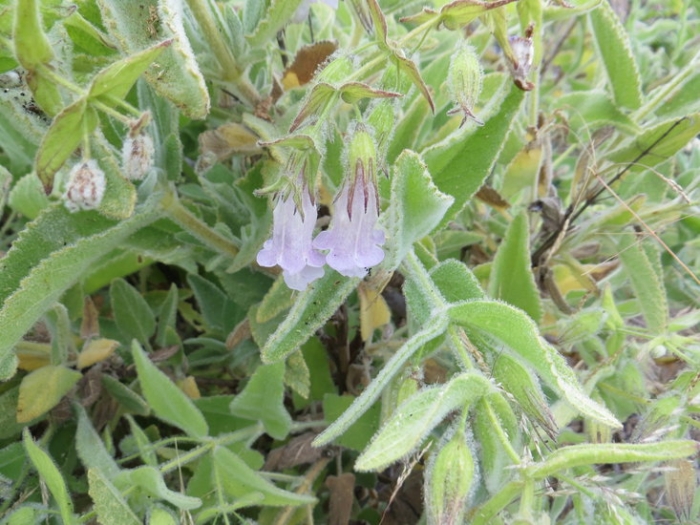Island Pitchersage
(Lepechinia fragrans)
Island Pitchersage (Lepechinia fragrans)
/
/

Jordan Zylstra
Public Domain
Image By:
Jordan Zylstra
Recorded By:
Copyright:
Public Domain
Copyright Notice:
Photo by: Jordan Zylstra | License Type: Public Domain | License URL: http://creativecommons.org/licenses/publicdomain/ | Attribution: 2014 Jordan Zylstra | Publisher: Calphotos |














Estimated Native Range
Summary
Lepechinia fragrans, commonly known as Island Pitchersage, is an evergreen subshrub or shrub native to the coastal sage scrub and chaparral of the Channel Islands and the Transverse Ranges in Southern California. It typically grows from 60 centimeters to just under 2 meters in height and width, with a vase-shaped form and arching branches that become woody at the base. The plant’s foliage is light green with a fuzzy grayish-green appearance due to many hairs, and it emits a pleasant scent when touched. The square stems, characteristic of the mint family, are pronounced in this species. Seasonal dimorphism is exhibited with larger, lusher leaves during the rainy winter season, and smaller, grayer leaves during the dry season. Flowers appear in shades from white to pale pink to medium purple, and are most abundant from late spring to early summer. The fruit consists of four nutlets, which are smooth to shiny and dark brown to black.
Island Pitchersage is valued for its aromatic foliage and attractive flowers, which are considered the most pleasing among native pitcher sage species. It is suitable for use in native plant gardens, as a border plant, or in naturalized areas. This plant is easy to grow and maintain, and it can be propagated from seed, though it may be short-lived in garden settings. It thrives in full sun to light shade and prefers well-drained soils. While it is drought-tolerant, occasional watering can promote a fuller appearance. Pinching back encourages a more compact growth habit. Bumblebees are common pollinators of this plant, contributing to its ecological value.CC BY-SA 4.0
Island Pitchersage is valued for its aromatic foliage and attractive flowers, which are considered the most pleasing among native pitcher sage species. It is suitable for use in native plant gardens, as a border plant, or in naturalized areas. This plant is easy to grow and maintain, and it can be propagated from seed, though it may be short-lived in garden settings. It thrives in full sun to light shade and prefers well-drained soils. While it is drought-tolerant, occasional watering can promote a fuller appearance. Pinching back encourages a more compact growth habit. Bumblebees are common pollinators of this plant, contributing to its ecological value.CC BY-SA 4.0
Plant Description
- Plant Type: Shrub
- Height: 3-5 feet
- Width: 3-5 feet
- Growth Rate: Rapid
- Flower Color: Pink, Purple
- Flowering Season: Spring, Summer, Fall
- Leaf Retention: Evergreen
Growth Requirements
- Sun: Full Sun, Part Shade
- Water: Low
- Drainage: Fast, Medium, Slow
Common Uses
Bank Stabilization, Bee Garden, Bird Garden, Border Plant, Butterfly Garden, Deer Resistant, Drought Tolerant, Hummingbird Garden, Low Maintenance, Salt Tolerant, Showy Flowers
Natural Habitat
Native to coastal sage scrub and chaparral of the Channel Islands and the Transverse Ranges in Southern California
Other Names
Common Names: Fragrant Pitcher Sage
Scientific Names: Lepechinia fragrans , Sphacele fragrans , Sphacele cordifolia
GBIF Accepted Name: Lepechinia fragrans (Greene) Epling